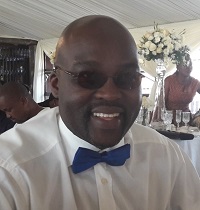Day :
- Stem cell and Stem cell biobanking | Vitrification | Fertility preservation | Biobank sustainability: current status and future prospects | Tissue engineering | Next generation Biobanking | Cryopreservation methods| Bio preservation and its Advances | Biobanking & expertise networks |
Session Introduction
Kejin Hu
University of Alabama at Birmingham, USA
Title: Role of bromodomain extra terminal proteins in cellular reprogramming
Time : 13:45-14:05

Biography:
Abstract:
Eric B Kmiec
Christiana Care Health System and University of Delaware, USA
Title: CRISPR-directed gene editing creates genetic heterogeneity surrounding the sickle cell disease point mutation
Time : 14:05-14:25

Biography:
Eric B. Kmiec is well-known for his pioneering work in the ï¬ elds of molecular medicine and gene editing. Throughout his professional career, He has led research teams in developing gene editing technologies and genetic therapies for inherited disorders such as Sickle Cell Disease. He is the recipient of multiple research awards from the National Institutes of Health (RO1s, R21s), the American Cancer Society, and private foundations including the 2012 Proudford Foundation Unsung Hero Award in Sickle Cell Disease. He has been a member of numerous editorial boards, NIH study sections and review boards and is the (primary/senior) author of more than 145 scientiï¬ c publications (mostly in genetic recombination and gene editing).
Abstract:
Naresh Kumar Rajendran
University of Johannesburg, South Africa
Title: Photobiomodulation at 660nm attenuates oxidative stress by inhibiting FOXO1 activation in diabetic wounded ï¬ broblast cells
Time : 14:25-14;45

Biography:
Abstract:
Yoo-Hun Suh
Gachon University, South Korea
Title: Potential stem cell therapy for Alzheimer’s disease and Parkinson’s disease
Time : 14:45-15:05

Biography:
Abstract:
Matthew M Fischer
Florida Healthcare Law Firm, USA
Title: Stem cell industry: Regulatory developments, FDA inspection and enforcement, legal issues for providers
Time : 15:05-15:25

Biography:
Abstract:
Stanca A Birlea
University of Colorado, USA
Title: Repigmentation of human vitiligo skin by narrow band UVB is controlled by transcription of GLI1 and activation of the β-Catenin pathway in the hair follicle bulge stem cells
Time : 15:40-16:00
Biography:
Abstract:
Renee Cottle
Clemson University, USA
Title: The promise of cell-based gene therapies using non-viral delivery approaches
Time : 16:00-16:20
Biography:
Abstract:
Alessandra Giuliani
Polytechnic University of Marche, Italy
Title: Advanced synchrotron radiation tomography in regenerative medicine: A 3D exploration into the intimate interactions between tissues, cells and biomaterials
Time : 16:20-16:40

Biography:
Abstract:
Bonginkosi Duma
National Health Laboratory Service, National Institute for Occupational Health, South Africa
Title: Quality indicators as a measure of good practice at the National Biobank in South Africa
Time : 16:40-17:00

Biography:
Abstract:
Dalia A Elgamal
Assiut University, Egypt
Title: Sodium butyrate, a histone deacetylase inhibitor as a novel agent in treatment of juvenile diabetic rat: A histological and molecular study on pancreas
Time : 17:00-17:20
Biography:
Abstract:
Devyani Josh
Mercer University, USA
Title: Biofabrication and characterization of microcapsules encapsulating PC-12 cells for treatment of Parkinson’s disease
Time : 17:20-17:40
Biography:
Abstract:
- Video presentation
Chair
Video presentation
Session Introduction
Alessandra Giuliani
Polytechnic University of Marche, Italy
Title: Advanced synchrotron radiation tomography in regenerative medicine: A 3D exploration into the intimate interactions between tissues, cells and biomaterials
Biography:
Abstract:
- Clinical and Translational Research | Advances in Biomedical Engineering, Imaging and Screening | Stem Cell Research and Regenerative Medicine | Gene Therapy | Regenerative Medicine in Aging, Dermatology and Plastic Surgery | Mesenchymal stem cells (MSC) | Tissue engineering | Vitriï¬ cation
Location: COPA-B
Session Introduction
Sarah K Steinbach
Brevitas Consulting, Canada
Title: Modeling aging and type-2 diabetes with precursors derived from skin
Time : 14:15-14:35
Biography:
Abstract:
Maria Giovanna Francipane
University of Pittsburgh, USA
Title: Lymphotoxin-beta receptor angiogenic signaling is crucial for bio-engineering a kidney in lymphoid organs
Time : 14:35-14:55
Biography:
Abstract:
Nadja Zeltner
University of Georgia, USA
Title: Modeling disease of the peripheral nervous system using human pluripotent stem cells
Time : 14:55-15:15
Biography:
Abstract:
Mike Van Alstine
The University of Texas MD Anderson Cancer Center, USA
Title: Creating a single version of the truth in translational research, connect clinical samples with clinical data
Time : 15:15-15:35
Biography:
Mike Van Alstine has a background in Computer Science Engineering and Electrical Engineering. His software development experience focuses on customercentric user experience and developing metrics and dashboards to facilitate process improvement. Over the past ï¬ ve years, he has managed a team of developers at MD Anderson and provided leadership on the development of the Prometheus platform.
Abstract:
Nashwa AM Mostafa
Assiut University, Egypt
Title: Effect of mesenchymal stem cells alone or combined with berberine versus methotrexate in an experimental model of rheumatoid arthritis
Time : 15:35-15:55
Biography:
Abstract:
Amal T Abou-Elghait
Assiut University, Egypt
Title: The role of adipose-derived mesenchymal stem cells in the healing of experimentally induced gastric ulcer in adult male albino rats
Time : 16:10-16:30
Biography:
Abstract:
Satish Kumar
Chaudhary Devi Lal University, India
Title: Effects of vitriï¬ cation on morphology and mRNA expression in apoptotic genes in ovine immature cumulus oocytes complexes
Time : 16:30-16:50
Biography:
Abstract:
Islam Medhat
Avoid Surgery Clinics Alexandria, Egypt
Title: Management of muscular dystrophy using ultrasound-guided speciï¬ c intramuscular platelets rich plasma injections: A case report
Time : 16:50-17:10
Biography:
Abstract:
- Poster presentations
Location: COPA-B
Session Introduction
Heidi Ulrichs
University of Georgia, USA
Title: Generation of sympathoadrenal progenitor cells from human pluripotent stem cells
Biography:
Abstract:
Divya Desai and Prasad Pethe
NMIMS University, India
Title: Polycomb repressive complex 1 regulators of early ectodermal differentiation
Biography:
Abstract:
Biography:
Abstract:
Biography:
Abstract:
Konan Kouassi Martin
Félix Houphouët-Boigny University, Ivory Coast
